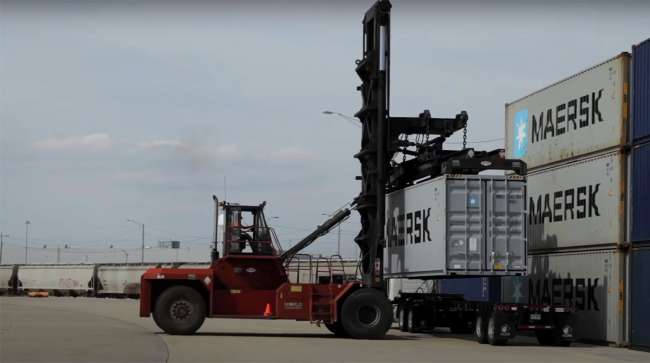Senior Reporter
DOT Marks FLOW’s Two-Year Anniversary

[Stay on top of transportation news: Get TTNews in your inbox.]
An information-sharing forum the Biden administration launched in response to pandemic-related supply chain woes turned 2 years old this month and is marking the occasion by focusing on inland freight initiatives.
Since its launch in the spring of 2022, the Freight Logistics Optimization Works, or FLOW, has expanded its capabilities and membership. The Department of Transportation has announced the initiative began to publish data specific to inland freight hubs.
Such data is designed to enable FLOW’s volunteer members to better gain a comprehensive picture of upcoming container import volumes as well as traffic. Secretary Pete Buttigieg has championed FLOW’s first-of-its-kind private-public partnership, indicating that its contributions have informed market-driven strategies beneficial to supply chain connectivity.
The department pointed to a White House Council of Economic Advisers analysis that linked supply chain connectivity improvements with degrees of disinflation in recent years. “Two years ago, we launched FLOW, the first public-private platform of its kind, to share data on supply chains in order to help goods move quickly and cheaply,” Buttigieg said March 20.

Buttigieg
“The Biden-Harris administration’s efforts to strengthen American supply chains have helped reduce inflation from pandemic peaks — and today, with the expansion of FLOW, we expect to see even greater benefits to American families and businesses,” the secretary continued.
The initiative’s data-sharing applications stem from its volunteer members. In statements accompanying the department’s announcement about FLOW’s anniversary, stakeholders praised information-sharing capabilities that often result in real-time plans or strategies. Stakeholders evaluate the initiative’s analyses in order to enhance interoperability across supply chain corridors.
“FLOW provides participants with unprecedented access to supply chain data, empowering our port users with the ability to anticipate potential bouts of congestion. FLOW has become an invaluable tool to cargo owners seeking to manage their supply chains, and importantly, FLOW has become a safe and trusted repository of supply chain data, opening up possibilities for additional applications to support supply chain resiliency,” said Gene Seroka, executive director of the Port of Los Angeles.

Whitfield
“Since this project began the USDOT staff has been committed to creating a platform that brings visibility to the [U.S.] supply chain from every view. Consistently listening to the needs and concerns of the members from day one they have developed views that help members make the right decisions when it comes to maintaining an efficient flow within their supply chain,” added Jesse Whitfield, director of Global Ocean Freight with UPS Inc. “Additionally the USDOT leadership has added to their staff to accommodate the growing membership and the needs of this project. It hasn’t just been commitment, it has been the delivery of what matters.”
“The FLOW program,” Whitfield went on, “can continue to evolve under the USDOT, establishing itself as a trusted index not only for [U.S.] business but also for the supply chain needs of other departments within the federal government.”
FLOW motor carrier members include: C&K, Gulf Winds, IMC Companies, NFI Industries, RoadOne and Werner. Third-party logistics members include: Century Supply Chain Solutions, CH Robinson, DHL, FedEx, Gemini Shippers, ITS Logistics, STG Logistics and UPS.
Want more news? Listen to today's daily briefing above or go here for more info
The Biden administration launched FLOW in 2022. Its data is analyzed by the Bureau of Transportation Statistics. According to background information about the program, DOT explained that “because demand data is shared in advance of when respective logistics services would be required, supply-side optimizations such as modifying supply capacity levels, service level mixes, and service expectations can be made by participants in a more proactive and responsive manner. This in turn can help the industry mitigate bottlenecks and service-level volatility.”
During COVID-19, the distribution of freight throughout domestic supply chains experienced various degrees of disruption. Severe bottlenecks at key commercial ports were ascribed partly to inadequacies in communication and interoperability.




